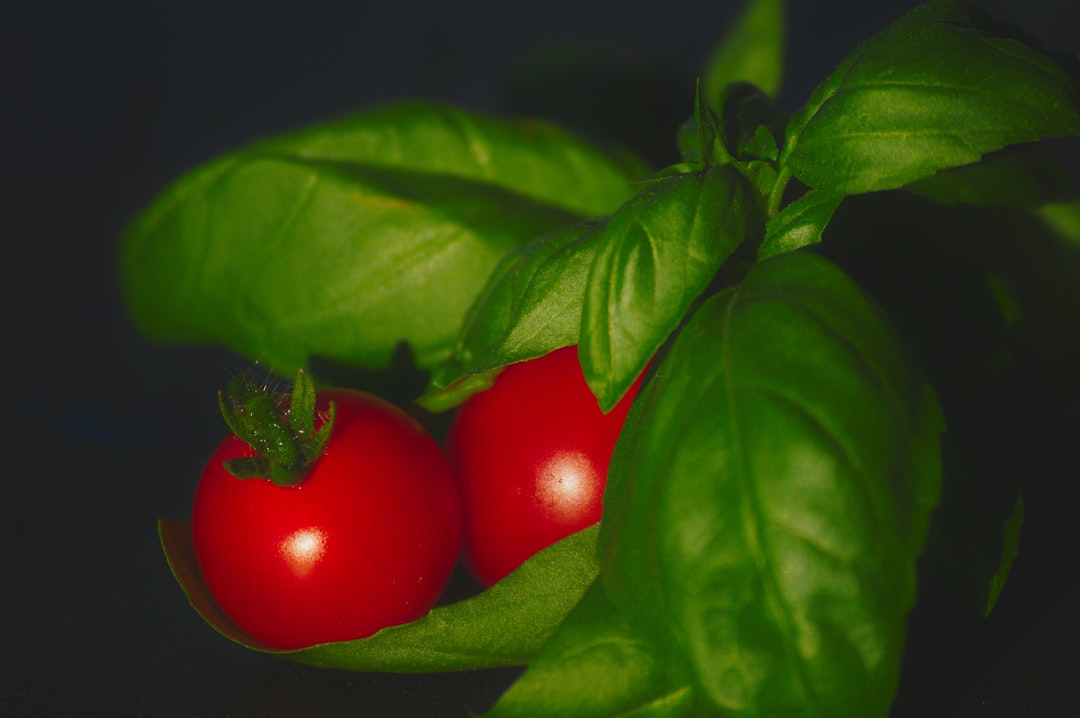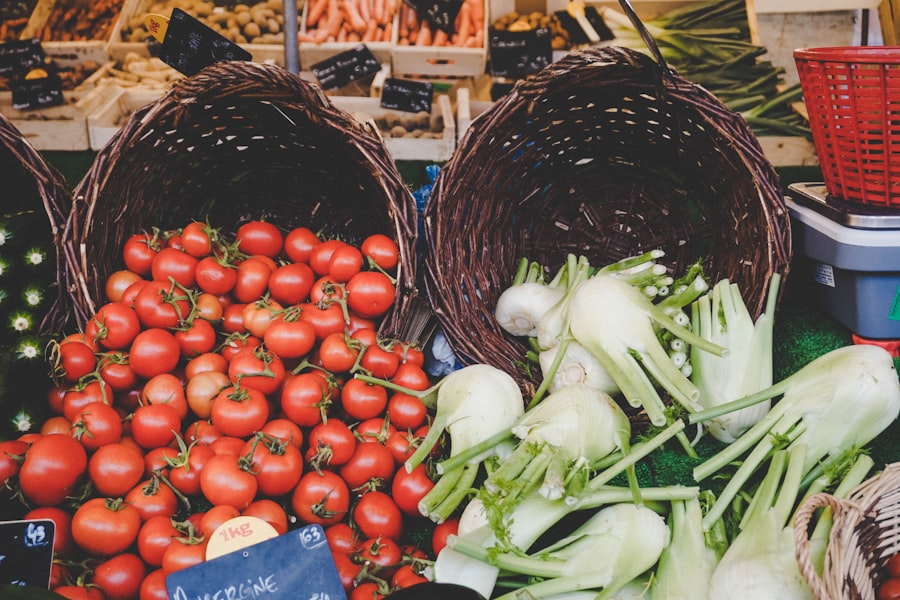Types of Indeterminate Tomato Plants: A Guide

Indeterminate tomato plants are a type of tomato plant that continues to grow and produce fruit throughout the growing season until they are killed by frost. Unlike determinate tomato plants, which have a predetermined size and stop growing once they reach a certain height, indeterminate tomato plants can grow indefinitely as long as they have the right conditions. This makes them a popular choice for home gardeners who want a continuous supply of fresh tomatoes.
Key Takeaways
- Indeterminate tomato plants grow continuously throughout the season
- They require staking or support due to their height and vine-like growth
- Indeterminate tomatoes produce fruit over a longer period of time
- Popular varieties include Beefsteak, Cherry, and Roma
- Consider factors such as climate and space when choosing the best indeterminate tomato plant for your garden
Understanding the Growth Habits of Indeterminate Tomato Plants
Indeterminate tomato plants have a growth habit that allows them to keep growing and producing fruit until they are killed by frost. This means that they can become quite large, often reaching heights of 6 to 10 feet or more. The size of the plant can be controlled through pruning, which involves removing the suckers that grow in the leaf axils. Pruning helps to promote air circulation and reduce the risk of disease, as well as focus the plant’s energy on producing fruit.
The indeterminate growth habit of these plants also means that they have a longer harvest season compared to determinate varieties. While determinate tomatoes tend to produce all their fruit at once, indeterminate tomatoes will continue to produce fruit throughout the season. This means that you can enjoy fresh tomatoes from your garden for a longer period of time.
Benefits of Growing Indeterminate Tomato Plants
One of the main benefits of growing indeterminate tomato plants is their higher yield potential. Because these plants continue to grow and produce fruit throughout the season, they can produce a larger quantity of tomatoes compared to determinate varieties. This is especially beneficial for those who want to preserve or can their tomatoes for use during the winter months.
In addition to higher yields, indeterminate tomato plants also tend to produce more flavorful fruit. This is because the longer growing season allows the tomatoes to fully ripen on the vine, resulting in sweeter and more flavorful tomatoes. The extended ripening period also allows for a wider range of tomato varieties to be grown, as some varieties require a longer growing season to reach their full potential.
Common Varieties of Indeterminate Tomato Plants
| Variety | Fruit Size | Days to Maturity | Yield | Disease Resistance |
|---|---|---|---|---|
| Brandywine | Large | 80-100 | Low to Moderate | None |
| Cherokee Purple | Medium to Large | 75-90 | Moderate | None |
| San Marzano | Medium | 80-90 | High | Verticillium Wilt, Fusarium Wilt |
| Roma | Small to Medium | 70-80 | High | Verticillium Wilt, Fusarium Wilt |
| Yellow Pear | Small | 70-80 | Moderate | None |
There are many different varieties of indeterminate tomato plants to choose from, each with its own unique characteristics. Some popular varieties include ‘Brandywine’, ‘Cherokee Purple’, and ‘San Marzano’. These varieties vary in size, color, and flavor, allowing you to choose the ones that best suit your preferences.
‘Brandywine’ is a large, pink tomato with a rich, sweet flavor. It is known for its meaty texture and is often used in sandwiches and salads. ‘Cherokee Purple’ is a medium-sized tomato with a deep purple color and a complex, sweet flavor. It is often used in salsas and sauces. ‘San Marzano’ is a small, red tomato with a firm texture and a rich, tangy flavor. It is prized for its use in Italian cooking, particularly in sauces and pastes.
Determining the Best Indeterminate Tomato Plant for Your Garden
When choosing an indeterminate tomato plant for your garden, there are several factors to consider. First, you should consider your climate and growing conditions. Some varieties are better suited to hot climates, while others thrive in cooler temperatures. You should also consider the amount of space you have available in your garden, as some varieties can become quite large.
Personal preferences should also play a role in your decision-making process. Consider the size, color, and flavor of the tomatoes you prefer, as well as how you plan to use them. If you enjoy making sauces or salsas, you may want to choose a variety that has a rich flavor and a firm texture.
Tips for Growing Indeterminate Tomato Plants Successfully

To grow indeterminate tomato plants successfully, it is important to prepare the soil properly and provide them with the right nutrients. Start by preparing the soil by removing any weeds or debris and adding organic matter, such as compost or well-rotted manure. This will help to improve the soil structure and provide the plants with the nutrients they need to grow.
Watering is also important for indeterminate tomato plants, as they have a high water requirement. Water deeply and regularly, making sure to keep the soil evenly moist but not waterlogged. Mulching around the base of the plants can help to conserve moisture and prevent weeds from competing with the plants for nutrients.
Pest and disease management is another important aspect of growing indeterminate tomato plants. Keep an eye out for common pests such as aphids, tomato hornworms, and whiteflies, and take action to control them if necessary. Diseases such as blight and blossom end rot can also affect tomato plants, so it is important to monitor your plants closely and take steps to prevent or treat these issues.
Common Problems Encountered When Growing Indeterminate Tomato Plants
While indeterminate tomato plants can be highly productive, they are not without their challenges. One common problem encountered when growing these plants is blossom end rot, which is characterized by a dark, sunken spot on the bottom of the fruit. This is caused by a calcium deficiency in the plant, which can be prevented by ensuring that the soil has adequate calcium levels and that the plants receive consistent watering.
Cracking is another issue that can affect indeterminate tomato plants. This occurs when the fruit expands too quickly, causing the skin to split. To prevent cracking, make sure to water consistently and avoid overwatering or underwatering the plants.
Sunscald is another problem that can occur with indeterminate tomato plants. This happens when the fruit is exposed to direct sunlight for extended periods of time, causing it to become discolored and develop a leathery texture. To prevent sunscald, provide the plants with some shade during the hottest part of the day or use shade cloth to protect the fruit.
Harvesting and Storing Indeterminate Tomato Plants
Knowing when to harvest your indeterminate tomato plants is important to ensure that you pick them at their peak ripeness. Tomatoes should be harvested when they are fully colored and slightly soft to the touch. Avoid picking them when they are still green, as they will not ripen properly off the vine.
To store your harvested tomatoes, it is best to keep them at room temperature and out of direct sunlight. Avoid storing them in the refrigerator, as this can cause them to lose flavor and develop a mealy texture. If you have a large harvest, you can also consider canning or preserving your tomatoes for use throughout the year.
Using Indeterminate Tomato Plants in Cooking and Recipes
Indeterminate tomato plants produce flavorful fruit that can be used in a variety of recipes. Fresh tomatoes are delicious in salads, sandwiches, and salsas. They can also be roasted or grilled to bring out their natural sweetness. If you have an abundance of tomatoes, you can also consider making sauces, soups, or even tomato jam.
Canning and preserving is another great way to make use of your indeterminate tomato plants. You can make homemade tomato sauce, salsa, or even tomato paste to enjoy throughout the year. Canned tomatoes can also be used in a variety of recipes, from pasta dishes to stews and casseroles.
Conclusion and Final Thoughts on Indeterminate Tomato Plants
In conclusion, indeterminate tomato plants are a great choice for home gardeners who want a continuous supply of fresh tomatoes. Their indeterminate growth habit allows them to keep growing and producing fruit throughout the season, resulting in higher yields and a longer harvest season. They also tend to produce more flavorful fruit compared to determinate varieties.
While growing indeterminate tomato plants can come with its challenges, with proper care and attention, you can enjoy a bountiful harvest of delicious tomatoes. Choose the variety that best suits your climate and growing conditions, and make sure to provide them with the right nutrients, water, and pest management. With a little bit of effort, you can enjoy the taste of homegrown tomatoes all season long.
If you’re interested in learning more about types of indeterminate tomato plants, you might find this article from Lawn World helpful. It provides a comprehensive guide to different varieties of indeterminate tomatoes and their unique characteristics. From heirloom varieties to hybrid cultivars, this article covers it all. Check it out here for a deeper dive into the world of indeterminate tomatoes.
FAQs
What are indeterminate tomato plants?
Indeterminate tomato plants are those that continue to grow and produce fruit throughout the growing season until they are killed by frost.
What are the benefits of growing indeterminate tomato plants?
Indeterminate tomato plants produce fruit over a longer period of time than determinate varieties, which means you can enjoy fresh tomatoes for a longer period of time. They also tend to produce larger fruit than determinate varieties.
What are the different types of indeterminate tomato plants?
There are many different types of indeterminate tomato plants, including cherry tomatoes, beefsteak tomatoes, heirloom tomatoes, and paste tomatoes.
What are cherry tomatoes?
Cherry tomatoes are small, bite-sized tomatoes that are perfect for snacking or adding to salads. They come in a variety of colors, including red, yellow, and orange.
What are beefsteak tomatoes?
Beefsteak tomatoes are large, meaty tomatoes that are perfect for slicing and adding to sandwiches or burgers. They come in a variety of colors, including red, pink, and yellow.
What are heirloom tomatoes?
Heirloom tomatoes are varieties that have been passed down through generations of gardeners. They come in a variety of shapes, sizes, and colors, and are prized for their unique flavors.
What are paste tomatoes?
Paste tomatoes are meaty tomatoes that are perfect for making sauces and salsas. They are typically oblong in shape and have fewer seeds than other tomato varieties.



